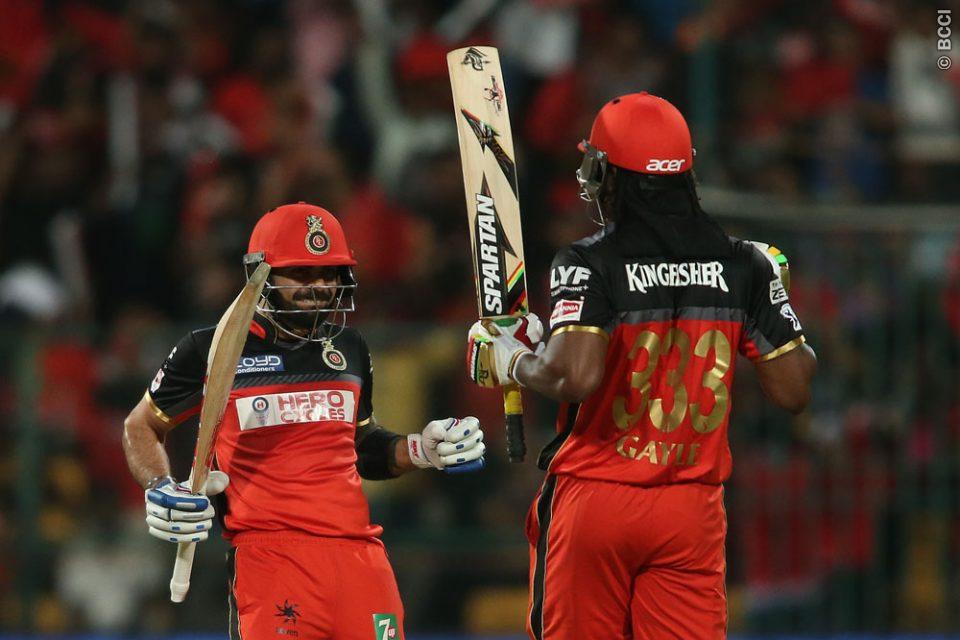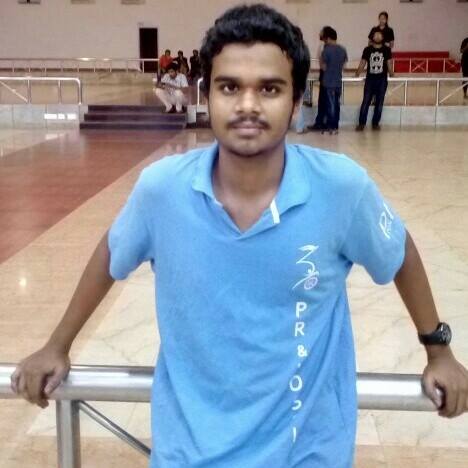Numbers don't lie | How high has Kohli's 2016 raised the bar above Gayle's 2012?

It was the 16th over of the innings in a floodlight-lit Feroz Shah Kotla stadium. Mahela Jayawardene, who had stepped in for an injured Virender Sehwag as the captain of Delhi Daredevils, was wondering about his next bowling option. Chris Gayle had just hit Irfan Pathan for three sixes in the 14th over, and the big grin on the big West Indian's face was getting wider with each passing over. Jayawardene brought in Pawan Negi and in a match where Bengaluru were scoring runs at nearly 10 runs per over, the left-arm spinner had a respectable runs per over of 7.5. That figure was decimated though, as Gayle opened up his arms once again, and almost effortlessly hit him for three consecutive sixes. Gayle made 128 on that night, and it was his IPL in 2012. Virat Kohli was at the other end of the crease on that night, and he was enjoying the show from the best seat in the house.
The tables have turned this season. It is Virat Kohli who is dominating the headlines, while Chris Gayle has been reduced to being a mere spectator. Kohli, of course, has succeeded in doing what Gayle could not back in 2012—carry his team to the knockout stage. Although, to be fair to Gayle, Kohli has had more support from his teammates, than Gayle had back then. This season Kohli has received support from the likes of Ab de Villiers and KL Rahul. Yet, statistically the Indian Test skipper has been on another planet this season.
He has slammed four centuries—most by any player in a season. He has scored 919—highest by any player in a season. Gayle is the other player who has dominated an IPL season like this with the bat. So, the obvious question is: How far has Kohli's performances in 2016 IPL raised the bar above Gayle's performances in 2012? We have strived to find the answer based on the following criteria:
1. Total runs scored at home and away?
2. Consistency (average)?
3. How they approach their innings (strike rates while batting first and chasing)
4. How many times RCB have won when Kohli and Gayle have performed?
5. How far Gayle and Kohli have contributed to RCB's totals?
6. How much support they had from their teammates?
Total Runs Scored:

RCB’s home den, the Chinnaswamy Stadium, is one of the smallest grounds in India. As a result, the smallest boundary in the stadium is just around 70 meters. Hence, even a slightly deflected top-edge could easily clear the ropes. Kohli has utilized this advantage to the maximum and has gathered 500+ runs in this ground through plenty of boundaries. Apart from the small boundaries, the Chinnaswamy wicket is as flat as they come, making it one of the most batsmen friendly stadium in the nation. Teams have crossed the 200-run barrier with ease on this ground.
In contrast to Kohli's dominance at home, the Jamaican destructor had conquered all the away venues in the IPL 2012, while struggling to have similar impact at home.
Average & Strike Rate:

Kohli possesses a mind-blowing average of 251 this season while chasing, which has been bloated by his 3 undefeated knocks in 4 of those matches. Also, he marginally surpasses Gayle’s average while batting first. Gayle, though, possesses an applaud-able average strike rate, significantly better than Kohli while batting first. This is, of course, completely down to the Gayle's ability to hit even the good deliveries out of the park without breaking a sweat.

However, while chasing a target the difference in statistics between these two batsman is glaring. Kohli handles the pressure brilliantly, and even thrives in it. Both these batsman have a very different approach to their batting. Gayle is not greatest runner between the wicket, hence, he can get bogged down at times, before, eventually, looking for the big shots—which also often leads to his downfall. Kohli, on the other hand, is a busier player. He keeps the score board ticking, always looking for the ones and twos, along with the occasional boundaries. The above graph shows that Gayle had low strike rates in the first half of his innings, before enormous upsurges in the second half. Kohli's though, is much more coherent.
In 2012, Gayle hit 46 fours and 58 sixes, meaning 72% of his total runs (733) came through boundaries. Kohli, on the other hand, has hit 78 fours and 36 sixes to score 57% of his total runs (919) through boundaries this season. The numbers do tell their own stories.
RCB Winning Percentage When Kohli/ Gayle Have performed:

In 2012, when RCB batted first and Gayle hit a 50+ score, the Bengaluru-based franchise had won only 2 of their 4 matches. The issue with Gayle till date is that, he focuses only on boundaries, and half of the time he would convert doubles into singles. Even for someone with Gayle's abilities it is hard to find the boundaries at will in every game, and the day he struggles to do so, he can become stagnant. His inability to take quick singles increases the pressure on his partner, and the batsmen who follow him—which is never ideal while chasing a total.
RCB have a slightly better win percentage when Kohli have performed while batting first. Bengaluru's poor bowling line-up has not made it easy for Kohli and co to defend a target. But, while chasing, RCB has a 100% win ratio, having won all the 3 matches when Kohli has performed. Kohli has this unique ability to prosper under pressure and his ability to rotate strikes has come in handy in big chases.
Contribution Towards Team's Total:

Both Gayle and Kohli’s contribution to their team's total while batting first and chasing are approximately the same, although Kohli has delivered a little extra in both the situations. The reason behind that is Kohli’s incredible consistency, having slammed 10 fifty+ scores in the 14 league stage matches this season, while Gayle managed 8 fifty+ scores in his 14 innings league stage games in 2012.
Other Players' Contributions When Kohli/ Gayle Have Performed:

A team is in for a lot of trouble if they bank too much on a particular player all the time. Average runs by other players while batting first is approximately 25 runs when Gayle or Kohli have performed. This means that other players have not stepped up to the mark when these two have got going while batting first, and this has severely hampered the final score while batting first.
While chasing, it is even worse in case of Gayle, because he ran a one-man show back in 2012. Average runs by other players around 18, which means that the southpaw had hardly received any support from his teammates. Contrastingly, Kohli has received a lot of support from the likes of Ab de Villiers and Kl Rahul this season at the other end.
Conclusion:
Virat Kohli is someone who has been in the form of his life, and the most noticeable thing with him is that he is getting better and better with every passing game. The three reasons behind Kohli’s success is self-confidence, consistency and sheer hard work, and this is why he is already being hailed as a legend at a young age of 27.
The stats highlights his incredible average and strike rate while chasing, and his mammoth contribution towards RCB's success this season. In many occasions he has led his team to victory from the front, like a captain should. He has also proved his critics wrong who said, he is only a good chaser and that he cannot perform while batting first, having produced three hundreds while setting a target in edition of the IPL. Gayle was outstanding in 2012, Kohli has been even better in 2016.
------------------------------------------------------------------------------------------------Grand-Finale
And it's now time for you to decide the 'Greatest IPL Player of All-Time'. Cast your vote for your favourite player in the Sportscafe #IPLGOAT poll. And once you are done

Comments
Sign up or log in to your account to leave comments and reactions
0 Comments